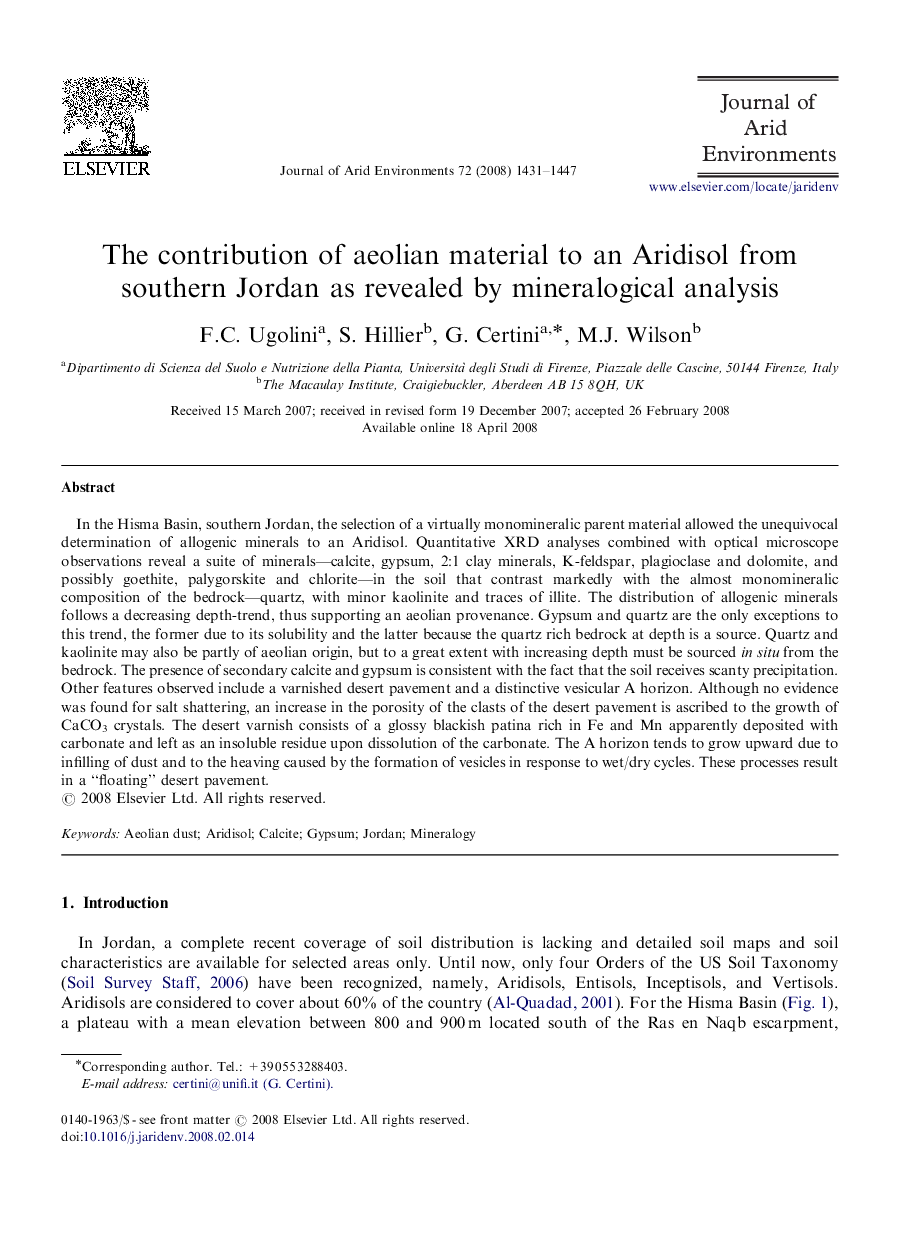| کد مقاله | کد نشریه | سال انتشار | مقاله انگلیسی | نسخه تمام متن |
|---|---|---|---|---|
| 4394098 | 1305519 | 2008 | 17 صفحه PDF | دانلود رایگان |
عنوان انگلیسی مقاله ISI
The contribution of aeolian material to an Aridisol from southern Jordan as revealed by mineralogical analysis
دانلود مقاله + سفارش ترجمه
دانلود مقاله ISI انگلیسی
رایگان برای ایرانیان
کلمات کلیدی
موضوعات مرتبط
مهندسی و علوم پایه
علوم زمین و سیارات
فرآیندهای سطح زمین
پیش نمایش صفحه اول مقاله

چکیده انگلیسی
In the Hisma Basin, southern Jordan, the selection of a virtually monomineralic parent material allowed the unequivocal determination of allogenic minerals to an Aridisol. Quantitative XRD analyses combined with optical microscope observations reveal a suite of minerals-calcite, gypsum, 2:1 clay minerals, K-feldspar, plagioclase and dolomite, and possibly goethite, palygorskite and chlorite-in the soil that contrast markedly with the almost monomineralic composition of the bedrock-quartz, with minor kaolinite and traces of illite. The distribution of allogenic minerals follows a decreasing depth-trend, thus supporting an aeolian provenance. Gypsum and quartz are the only exceptions to this trend, the former due to its solubility and the latter because the quartz rich bedrock at depth is a source. Quartz and kaolinite may also be partly of aeolian origin, but to a great extent with increasing depth must be sourced in situ from the bedrock. The presence of secondary calcite and gypsum is consistent with the fact that the soil receives scanty precipitation. Other features observed include a varnished desert pavement and a distinctive vesicular A horizon. Although no evidence was found for salt shattering, an increase in the porosity of the clasts of the desert pavement is ascribed to the growth of CaCO3 crystals. The desert varnish consists of a glossy blackish patina rich in Fe and Mn apparently deposited with carbonate and left as an insoluble residue upon dissolution of the carbonate. The A horizon tends to grow upward due to infilling of dust and to the heaving caused by the formation of vesicles in response to wet/dry cycles. These processes result in a “floating” desert pavement.
ناشر
Database: Elsevier - ScienceDirect (ساینس دایرکت)
Journal: Journal of Arid Environments - Volume 72, Issue 8, August 2008, Pages 1431-1447
Journal: Journal of Arid Environments - Volume 72, Issue 8, August 2008, Pages 1431-1447
نویسندگان
F.C. Ugolini, S. Hillier, G. Certini, M.J. Wilson,